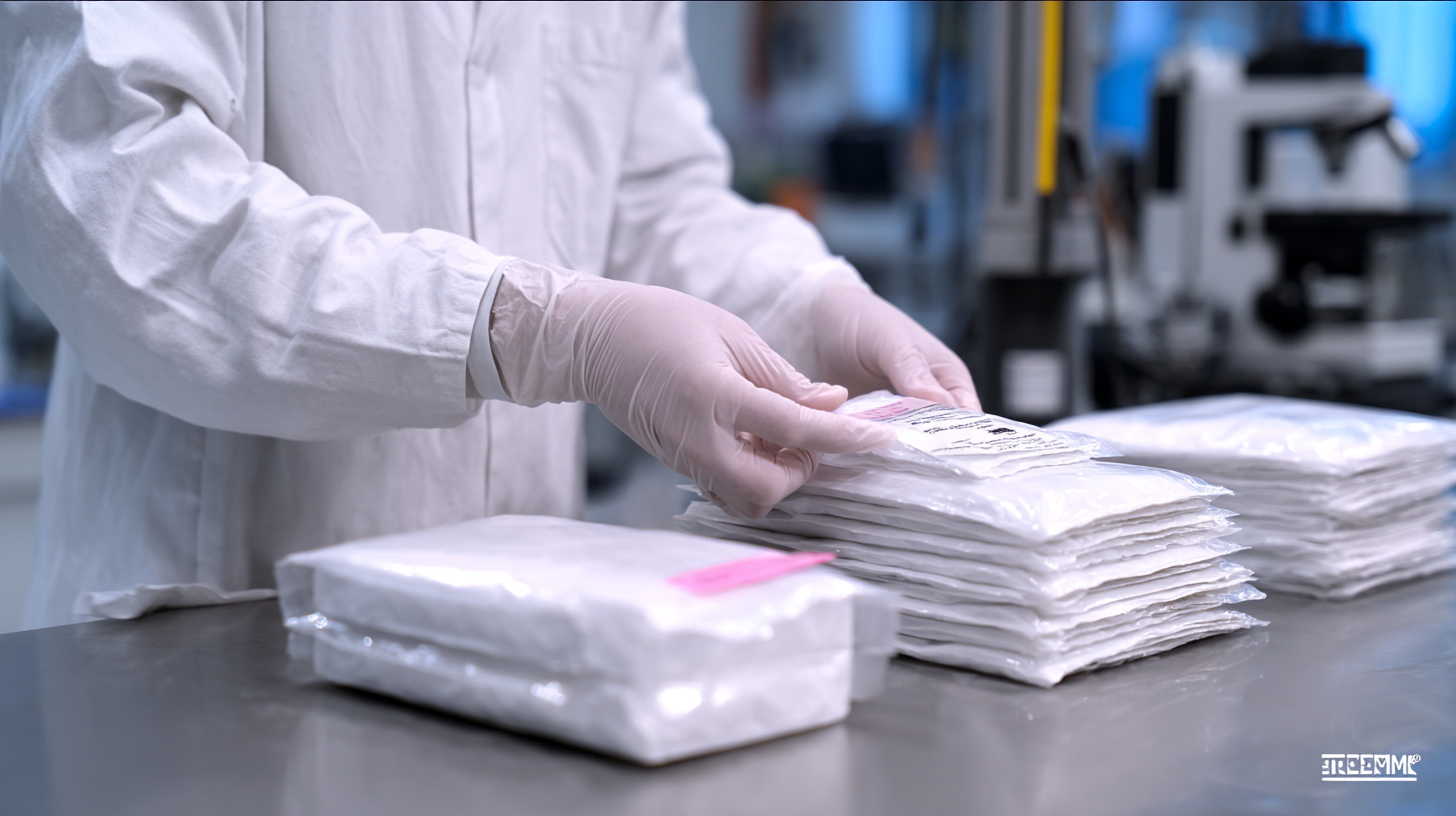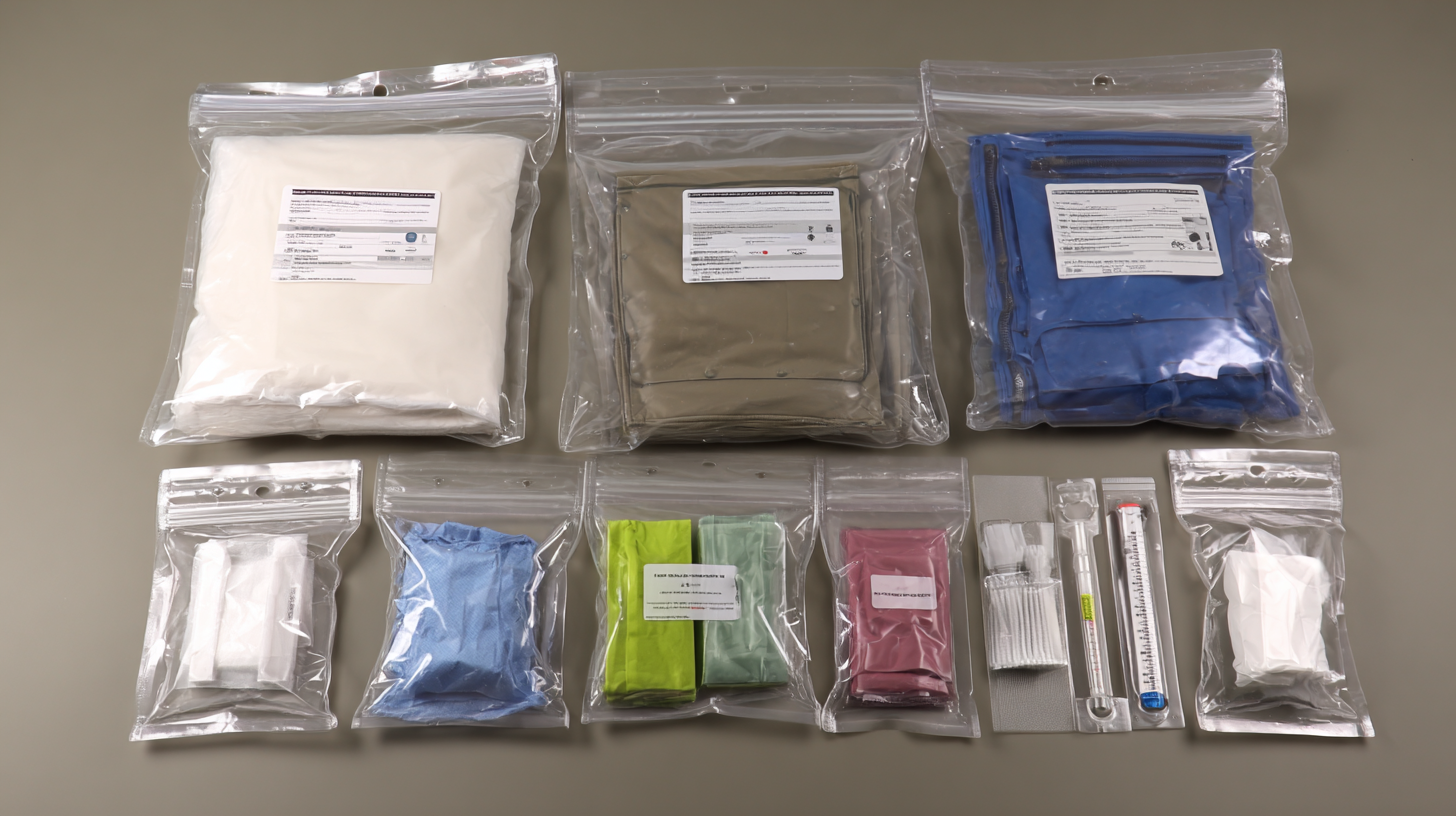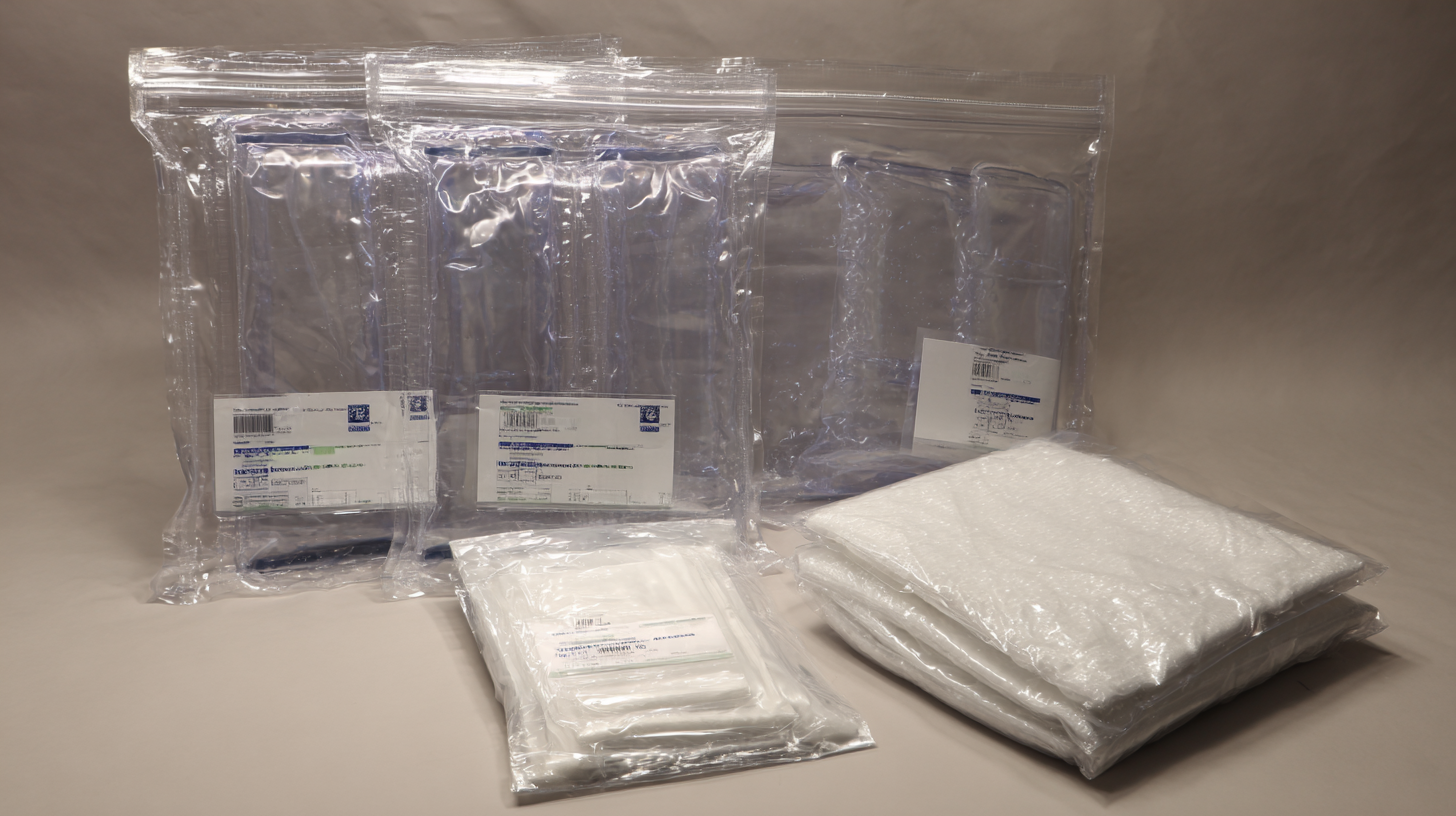 +86 178 5514 5298
+86 178 5514 5298
Leave Your Message
-
 CONTACT NUMBER
CONTACT NUMBER -
 CONTACT NUMBER
CONTACT NUMBER -
 CONTACT NUMBER
CONTACT NUMBER



In the healthcare and laboratory sectors, the demand for high-quality specimen transport bags has surged, with a reported market growth rate of approximately 5% annually, as highlighted by recent industry insights from MarketsandMarkets. Specimen transport bags play a crucial role in maintaining the integrity and safety of samples during transit, ensuring that they remain uncontaminated and viable for testing. As laboratories increasingly prioritize compliance with stringent regulations, the choice of manufacturers becomes vital in procuring these essential supplies. By discerning reliable manufacturers that meet industry standards, healthcare providers can significantly impact their operational efficiency and quality of service. This blog aims to explore alternative types of specimen transport bags and provide key insights on identifying quality manufacturers in a competitive landscape.

In the medical and laboratory fields, specimen transport bags play a crucial role in ensuring the integrity and safety of samples during transit. Understanding the importance of quality in these bags is vital for healthcare professionals. According to a report by MarketsandMarkets, the global healthcare packaging market, which includes specimen transport solutions, is projected to reach $315 billion by 2025, highlighting an increasing emphasis on quality packaging that protects sensitive materials. High-quality specimen transport bags are designed to withstand various environmental factors, minimizing the risk of contamination and sample degradation.

When selecting a manufacturer, prioritizing quality is essential. Here are some tips to ensure you choose the right supplier:
In addition, consider the manufacturer’s track record and customer reviews. A reputable company should showcase case studies or testimonials from satisfied clients, demonstrating their expertise in producing transport bags that meet stringent quality requirements. By focusing on these factors, you can make informed decisions that enhance the reliability and effectiveness of specimen transport solutions in your practice.
When evaluating manufacturers for specimen transport bags, several key factors must be taken into account to ensure quality and compliance with industry standards. First and foremost, adherence to regulatory requirements is critical. According to a report by the International Organization for Standardization (ISO), around 75% of manufacturers that comply with ISO 13485 are more likely to produce high-quality medical devices. This certification demonstrates a commitment to quality management systems that ensure product safety and effectiveness.
Another important consideration is the manufacturer's experience in the healthcare sector. Data from the Research and Markets report indicates that companies with over ten years of experience in producing transport solutions have a significantly lower defect rate—approximately 12% compared to newer entrants. Additionally, assessing the manufacturer's ability to innovate is crucial. The same report highlights that manufacturers investing at least 8% of their revenue into research and development are twice as likely to introduce new, improved products that meet evolving industry needs.
Furthermore, the quality of raw materials used in manufacturing specimen transport bags can significantly impact their performance. A study published in the Journal of Medical Engineering & Technology found that bags made from high-grade polyethylene showed a 30% increase in tear resistance compared to lower-quality alternatives. Selecting a manufacturer that prioritizes material integrity will not only ensure compliance but also enhance the reliability of specimen transport solutions.

When selecting high-quality specimen transport bags, it's crucial to understand the key features that distinguish superior products from the rest. High-quality bags must exhibit exceptional durability, ensuring that they can withstand various environmental conditions during transportation. Research indicates that bags made from heavy-duty materials with excellent tear resistance significantly reduce the risk of contamination and specimen degradation. Moreover, features such as leak-proof seals and secure closures are vital for maintaining the integrity of clinical samples, thus minimizing the potential for sample loss or cross-contamination.
Additionally, the design of the specimen transport bags plays a prominent role in their efficiency. Bags that come with a clear labeling system allow for swift identification, reducing the risk of mishandling. According to industry reports, the inclusion of insulation properties is another noteworthy feature, particularly in temperature-sensitive specimens that require specific conditions for preservation. A recent consensus among experts in clinical testing emphasizes that utilizing high-quality transport solutions is paramount to promoting safer and more efficient laboratory practices, especially as seen in recent comprehensive efforts to ensure safety in sample transport amid increasing demand for reliable healthcare solutions.
| Feature | Importance | Material Type | Durability | Temperature Control | Seal Quality |
|---|---|---|---|---|---|
| Leak-Proof Sealing | Critical for specimen integrity | Polyethylene | High | Yes | Double-seal |
| Chemical Resistance | Protects against hazardous materials | Polypropylene | Moderate | No | Single-seal |
| Size Variability | Accommodates various specimen types | N/A | N/A | Yes | N/A |
| Labeling Area | Essential for tracking | Smooth surface | High | No | N/A |
| Ease of Use | Facilitates handling | N/A | N/A | Yes | N/A |
When selecting a manufacturer for specimen transport bags, avoiding common pitfalls is essential to ensure quality and reliability. One prevalent mistake is not conducting thorough research on the manufacturer’s reputation and experience. Many buyers rush into decisions based on price alone, ignoring the importance of a manufacturer’s track record in producing high-quality products. Seek out reviews, testimonials, and case studies to gauge their reliability and the satisfaction of previous clients.
Another critical error is neglecting to clarify compliance with industry standards and regulations. Specimen transport bags often have strict requirements to ensure the safe handling of biological materials. Failing to confirm that a manufacturer adheres to these standards can lead to potential legal issues and compromise safety. Engage in discussions about certifications and quality control processes to ensure the manufacturer is well-versed in compliance and can meet your specific needs. By being diligent in these areas, you can significantly reduce the risk of making a poor choice.
The landscape of specimen transport bag production is continuously evolving, influenced by various industry trends that prioritize sustainability and technological advancement. Manufacturers are increasingly adopting eco-friendly materials in response to rising environmental concerns. This shift not only meets regulatory requirements but also caters to consumers’ preferences for sustainable products. For instance, bioplastics and recyclable materials are becoming popular choices, leading to significant changes in the supply chain and production processes.
Additionally, the integration of advanced technologies such as smart packaging is transforming specimen transport. Intelligent systems embedded in transport bags can monitor temperature, humidity, and even detect breaches in packaging integrity. These innovations enhance the safety and reliability of specimen transport, which is crucial for medical and laboratory applications. As competitors strive to innovate, staying abreast of these trends becomes essential for manufacturers looking to ensure quality and compliance in their products. Embracing these changes not only provides a competitive edge but also ensures that manufacturers align with the future demands of the healthcare industry.
